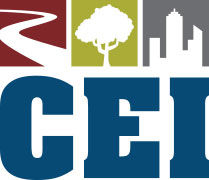Securing financing for your first fix-and-flip or rehab project can seem overwhelming, but with the right approach, it’s more accessible than you might think. Rehab loans are a popular choice for real estate investors looking to purchase, renovate, and sell properties for a profit. These loans provide the necessary capital to acquire and improve distressed properties, making them ideal for first-time investors aiming to enter the fix-and-flip market. This step-by-step guide will walk you through the process of securing a rehab loan, offering practical advice to help you get started on the right foot.
1. Understand Rehab Loans and Their Types
Before diving into the application process, it’s essential to understand what rehab loans are and the different types available. Rehab loans are designed to finance both the purchase of a property and the cost of renovations. There are two primary types of rehab loans:
- Hard Money Loans: These short-term loans are typically provided by private lenders and are secured by the property itself. Hard money loans are ideal for investors looking for quick access to capital, but they come with higher interest rates and shorter repayment periods (usually 6 to 24 months).
- FHA 203(k) Loans: These are government-backed loans aimed at homebuyers who want to purchase and renovate a property for their personal residence. While not typically used for fix-and-flip investments, they can be useful for first-time investors looking to renovate a home to live in before selling.
Understanding which loan product is best suited for your investment goals will help you narrow down your financing options and prepare for the application process.
2. Evaluate Your Financial Situation
Lenders will assess your financial situation before approving any rehab loan, so it’s crucial to have a clear understanding of your credit score, income, and existing debts. While traditional bank loans often require strong credit scores and extensive documentation, private lenders offering hard money loans tend to focus more on the value of the property and the potential return on investment (ROI) rather than your personal financial history.
That said, maintaining a solid credit score and demonstrating your ability to repay the loan can help you secure better loan terms, even with a private lender. Take time to review your credit report, settle any outstanding debts, and ensure your financial situation is in good shape before applying for a rehab loan.
3. Find the Right Lender
Next, research lenders who specialize in rehab loans. You’ll want to compare different lenders to find one that offers favorable terms, competitive interest rates, and a smooth approval process. Hard money lenders are often a popular choice for first-time investors, as they provide faster access to funds and are more flexible with approval criteria.
Look for lenders with experience in real estate investing, as they are more likely to understand the specifics of your project. You can find lenders through online marketplaces, real estate investment networks, or by asking for recommendations from experienced investors in your area.
4. Prepare a Strong Investment Plan
To increase your chances of securing a rehab loan, you’ll need to present a solid investment plan to your potential lender. Your plan should include:
- Detailed property analysis: Show that the property you want to purchase is a good investment by including its current condition, market value, and comparable sales in the area.
- Renovation budget: Provide a breakdown of estimated renovation costs, including materials, labor, and a contingency fund for unexpected expenses.
- After-repair value (ARV): Estimate the property’s value after renovations are complete, demonstrating that the investment will generate a profit.
- Exit strategy: Outline how you plan to sell or refinance the property once renovations are finished, ensuring the lender that you’ll be able to repay the loan.
A well-prepared investment plan will give lenders confidence in your project and increase the likelihood of securing financing.
5. Submit Your Application and Get Approved
Once you’ve found a lender and prepared your investment plan, it’s time to submit your loan application. Be ready to provide the necessary documentation, including proof of income, tax returns, and details about the property and your renovation plans. The approval process for hard money loans is usually much faster than traditional loans, often taking just a few days or weeks.
If approved, you’ll receive the funds needed to purchase the property and cover renovation costs. Keep in mind that most rehab loans disburse funds in stages based on the progress of the renovation, so you’ll need to manage your project efficiently to stay on track.
Conclusion
Securing a rehab loan as a first-time investor may seem challenging, but by understanding the process and following these steps, you’ll be well-prepared to succeed. Start by evaluating your financial situation, researching the right lenders, and preparing a strong investment plan. With careful planning and execution, you’ll be on your way to securing financing and completing your first successful fix-and-flip project.





























